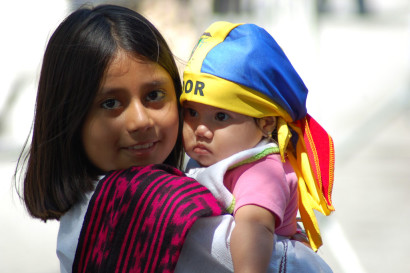Voting Barriers Encountered at a Diverse Poll Site in Queens, NY
ASTORIA, NY – By Suman Ragunathan, FI2W Consultant
In Astoria, Queens, an ethnically diverse immigrant neighborhood just minutes away from Midtown Manhattan, Saeeda Nadeem was on her way to vote for the first time after 15 years in the U.S.Saeeda, a housewife originally from Pakistan, became a citizen two years ago in 2006, and was excited to vote this year.She pointed to the differences between the candidates — a difference she described as “black and white.”
Saeeda’s husband, Mohammad, a hotel concierge –also originally from Pakistan– has been in the U.S. for 21 years and has been voting for twelve years. He said he was casting his vote because he wanted change:”The economy is going down — it’s very hard to live here, and we want hope.”He noted that he and Saeeda, who have three children born in the U.S., had been paying attention to election issues and the debates.Mohammad said he was voting for Barack Obama “because he said he would work on immigration policy.”
Saeeda and Mohammad went to P.S. 234 in Astoria, where they were told that they were at the wrong polling site. They were sent to another polling site across the street, P.S. 17.They later returned to P.S. 234, their first stop, where –though they both live at the same address– Mohammad voted. He then accompanied his wife back to P.S. 17 to vote.
Exit pollsters surveying Asian American voters at P.S. 234 reported helpful poll workers, a variety of interpreters available to assist voters in languages other than English, and very few voters being asked for identification in order to be able to vote.
Across the street, P.S. 17 was a different scene.Lines at times extended beyond the door of the Henry David Thoreau School as residents filed in to vote. Unfortunately, widespread voting barriers accompanied the long lines.



 While most of the city sleeps, a growing number of New Yorkers get together late at night to dance tango.
While most of the city sleeps, a growing number of New Yorkers get together late at night to dance tango.